
This web page presents some of the floundering this amateur
underwent while attempting to derive an all-sky
photometry solution for the
star field centered on HD 37605 (hereafter referred to as E0540).


Figure 2. Comparison of equation magnitude solutions with
Landolt magnitudes for the LA0540 (Landaolt Area at RA = 05:40, Dec
~0). RMS scatter is 0.023, 0.021, 0.054 and 0.030 magnitude (for B, V R
and I). Observations were made on 2004.12.10 at an air mass of
~1.8.
These 4 panels show that the equation magnitudes can produce
acceptable fits with typical SE of ~0.03 mag by adjusting only one
constant (zero offset) in each filter's equation relating B-V, air
mass, exposure time and measured intensity. The next set of 3
graphs were produced by comparing colors for the unknown star field
(E0540) using the magnitude equations and constant solutions. If the 4
constants that work for the Landolt fields also work for the unknown
star fields, then the color/color scatter diagrams for the unsknown
stars should be in approximate agreement with the corresponding
color/color scatter diagrams for the landolt stars.
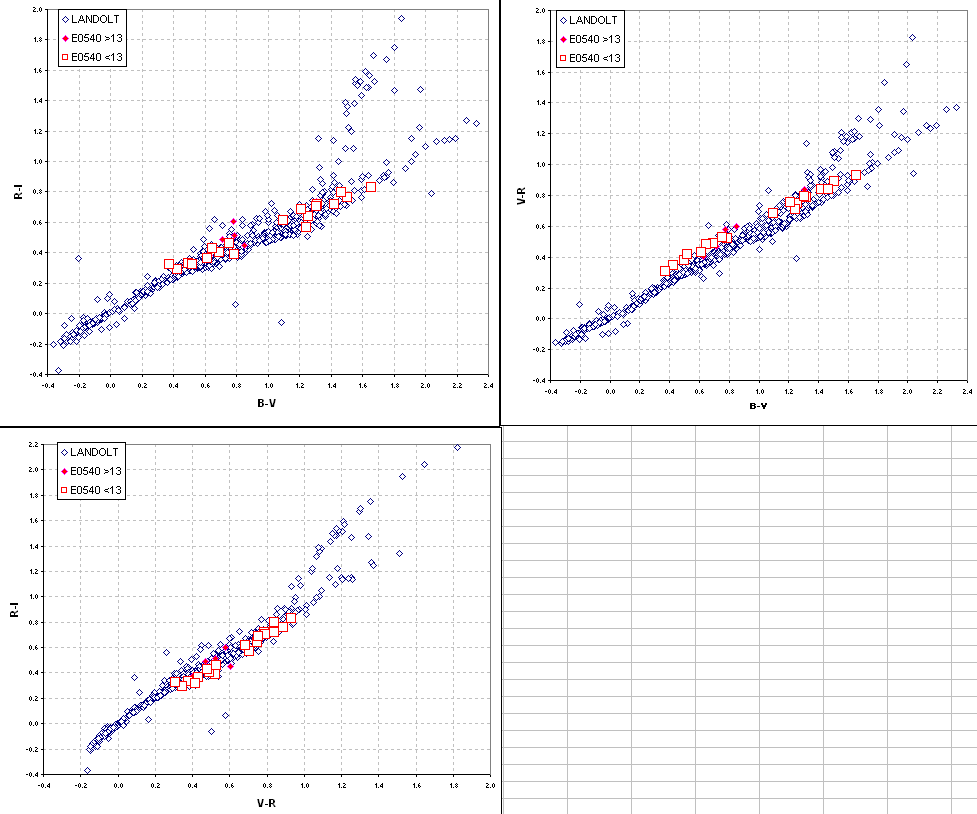
Figure 3. Star colors scatter diagram for 707 Landolt
stars and the 24 E0540 stars that were "solved" using my equation
algorithm.
This graph is a "sanity check" meant to uncover systematic errors
in the solutions for any of the 4 magnitude bands for the unknown
region
E0540. The E0540 stars exhibit small offsets with respect to the
Landolt stars. This could be caused by changes in extinction between
the time the Landolt area was observed and the time E0540 was observed.
It could also be caused by an error in my assumed extinction combined
with the fact that the E0540 ROI was observed when it was at a slightly
different air mass than the Landolt area. A third possibility is that
my filter wheel doesn't stop at the same location each time a filter is
selected, and the slight mis-alignment causes a slightly different flat
frame (indeed, I found evidence for this when exposing the flat frames:
the appearance of the flat frame image depended on the direction from
which I approached a specific filter). Whatever the explanation, it is
appropriate to make use of the extra information about star colors to
apply empirical adjustments to the equation magnitudes in order to
achieve agreement with the Landolt color/color scatter diagrams. When
this is done we obtian the following color/color scatter diagrams.
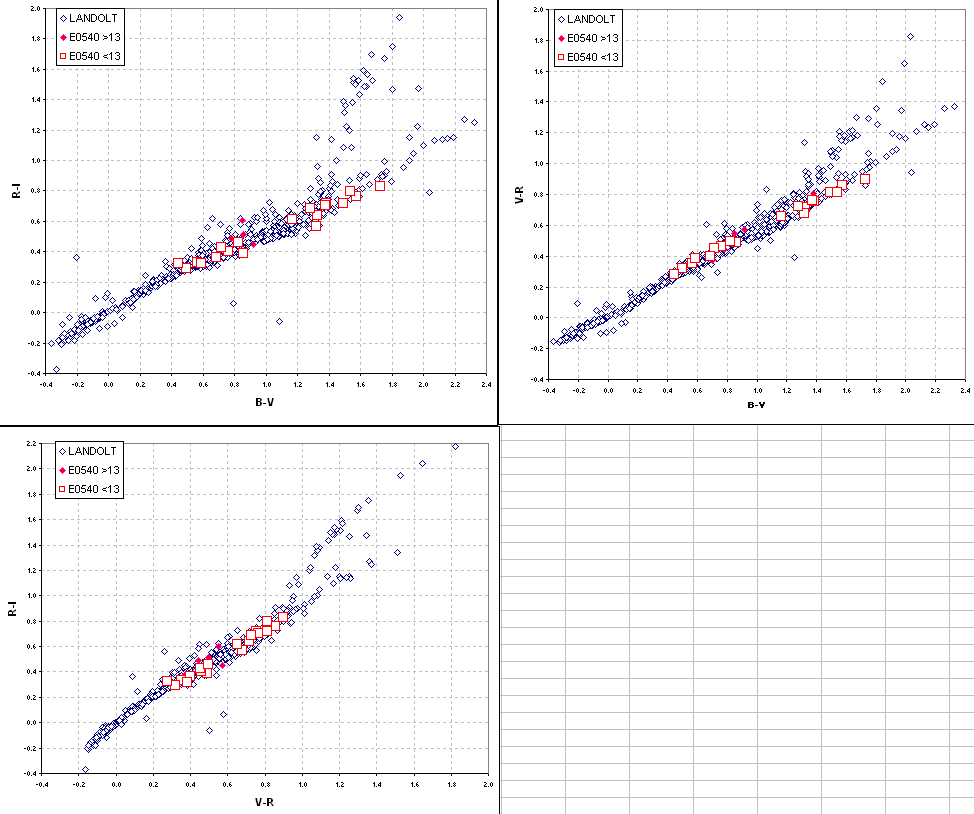
Figure 4. Star colors scatter diagram for 707 Landolt
stars and the 24 E0540 stars that were "solved" using my equation
algorithm. Adjustments of +0.04, -0.03, 0.00 and 0.00 were applied to
the E0540 BVRI magnitudes.
These color/color scatter diagrams were obtained by applying
empirical offset corrections to the B- and V-band magnitudes for E0540.
The corrections are +0.04 and -0.03 magnitude. No corrections for the
R- and I-band magnitudes were necessary.
2004 Dec 01
All-Sky Observations
On December 01, 2004, UT, I used a Celestron CGE-1400 (14-inch
Scchmidt-Cassegrain) telescope in a prime focus configuration using a
Starizona HyperStar field-flattening lens. I used a SBIG CFW-8 with
Custom Scientific BVRI filters attached to a SBIG ST-8XE CCD camera.
During the course of 9.3 hours I observed 3 Landolt regions and two
exoplanet regions for the purpose of creating a BVRI photometric
sequence for the exoplanet star fileds.
The Landolt regions were LA2343 (16 stars, m ~ 1.2), LA0452 (31
stars, m ~ 4.1, 3.1, 2.4, 2.1, 1.6), LA 9853 (27 stars, m ~ 1.8), where
LA2343 refers to the Landolt star group at RA = 23:43 (Dec ~ 0) and "m"
is a synbol I've used for decades in the atmospheric sciences to
represent air mass. For the B-filter there are 198 observations (of 74
Landolt stars), for the V-filter there are 105 observations (of 74
stars), and for the R- and I-filters there are 30 observations (of 23
stars). All "intensities" were hand measured (locating the aperture
pattern for maximum intensity for the bright stars, and centered
viisually for the faint stars) using MaxIm DL 4.0.
Measured intensity was converted to magnitude using the following
equations:

Figure 1. Equations used to convert measured
intensity to magnitude. G is exposure time [seconds], INT is measured
intensity (using photometry aperture settings of 6, 2 and 7 pixels
(radius for signal aperture, gap width, sky background annulus width),
m is air mass (from TheSky 6.0), B-V are from the Landolt listing, and
all coefficients were determined using a least squares procedure.
In the above equations the first coefficient has to be adjusted from
one night to the next for reasons that I don't fully understand (for
example, they can be influenced by dust on the aperture corrector
plate). The second coefficient is extinction [magnitudes per air mass],
and it also must be adjusted from one night to the next (provided there
is sufficient air mass coverage to warrant an extinction solution).
Note that extinction declines with wavelength, as it should. The next
coefficient is related to star color, and it should be the same for a
given telescope configuration. Whenever the Landolt stars exhibit a
large range of star colors I adjust this coefficient. The alst
coefficient is related to the fact that star color varies slightly with
air mass.

Figure 2. Equation B-magnitude from 198 measured
intensities of 74 Landolt stars versus Landolt B-magnitudes. RMS
scatter is 0.056 magnitude, which assumes extinction was constant
throughout the observing session.
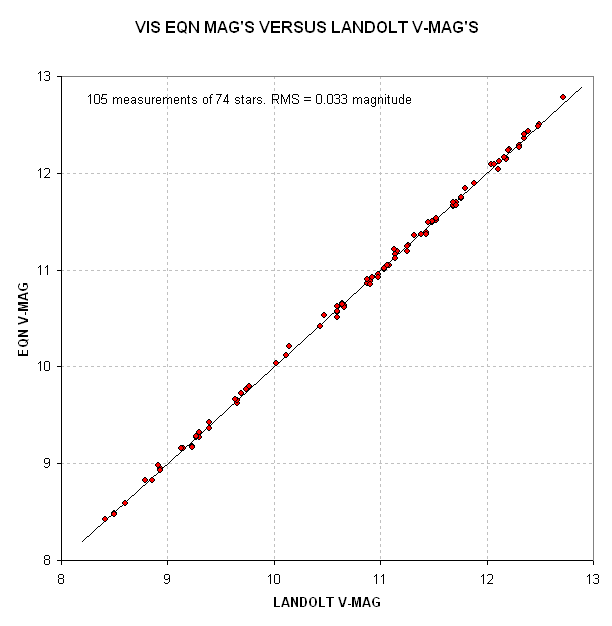
Figure 3. Equation V-magnitude from 105 measured
intensities of 74 Landolt stars versus
Landolt V-magnitudes. RMS scatter is 0.033 magnitude (which assumes
extinction was constant throughout the observing session).

Figure 4. Equation R-magnitude from 30 measured
intensities of 23 Landolt stars versus
Landolt R-magnitudes. RMS scatter is 0.033 magnitude (which assumes
extinction was constant throughout the observing session).

Figure 5. Equation I-magnitude from 30 measured intensities of 23 Landolt stars versus Landolt I-magnitudes. RMS scatter is 0.033 magnitude (which assumes extinction was constant throughout the observing session).
The extinction solution for the 9.3-hour observing session is shown
in the next graph.
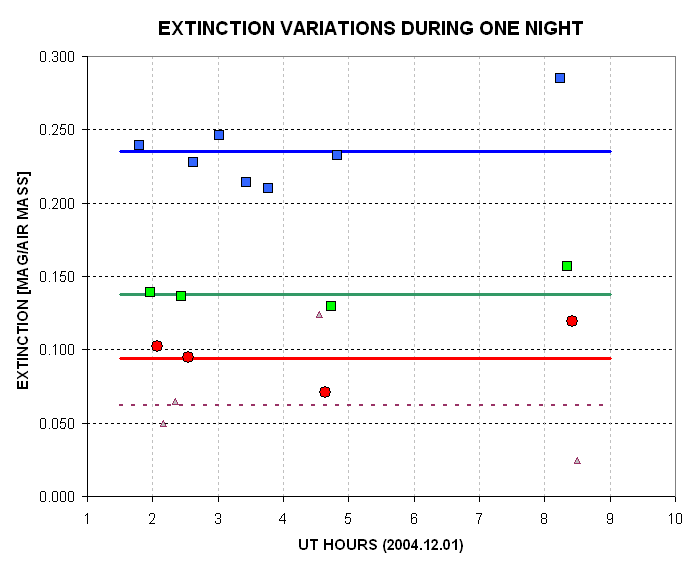
Figure 6. Extinction versus time for B, V, R and
I-bands. The average values
are 0.235, 0.138, 0.094 and 0.062 magnitude per air mass.
The extinction plots for B, V and R are correlated, going down then
up. They appear to undergo a similar percentage variation, as the next
graph shows.
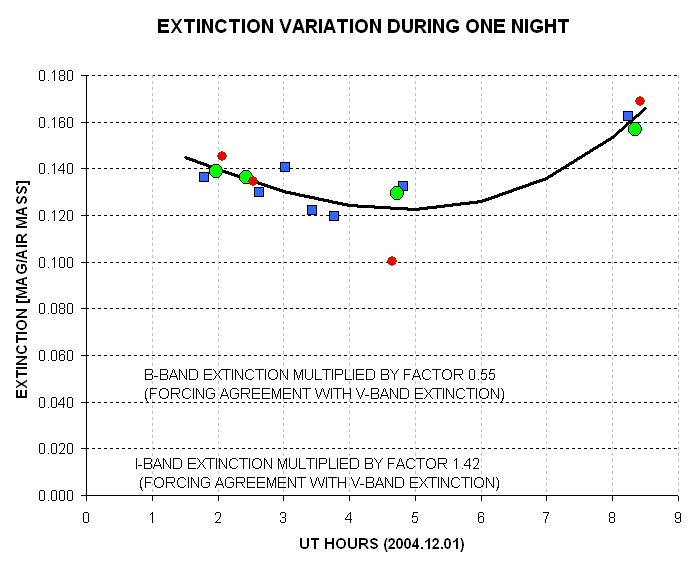
Figure 7. Extinction versus time for B, V and
R-bands for which B-band and R-band extinctions were multiplied by
factors that made them approximately equal to the V-band extinction.
The same curved shape appears for all
3 bands, consistent with the idea that extinction underwent a variation
that had the same percentage amplitude at all wavelengths.
The amount of variation of apparent extinction in the above figure
is difficult to explain. A cirrus cloud would
produce the same increment of absolute value for extinction at all
bands, not a similar percentage change. The B-band shows
a greater increase than the other bands. I simply don't understand the
systematic changes, so I adopted average values for the analysis at the
risk of increasing scatter in the equation magnitudes for not properly
representing extinction variations. This may account for the uncommonly
large RMS scatter in Fig.'s 2 and 5 (B-band and I-band).
When the set of 24 unknown stars in the E0540 field are plotted in a
B-V versus V-R scatter diagram it is possible to detect when an offset
error is present in the equation magnitude solutions. The same can be
said for a scatter plot of V-R versus R-I. By comparing the equation
magnitude scatter patterns with the corresponding scatter pattern for
the 1200 Landolt stars it is possible to perform a "reality check" that
can reveal the need for additional empirical magnitude offset
corrections to the unknown stars. When this was done for the 47 E0540
stars it was found that adjustments of +0.190, -0.110, +0.020 and
-0.015 magnitude were needed to shift their scatter pattern so that
they overlapped the landolt pattern. This set of adjustments is close
to a minimum adjustment set, and it is uncomfortably large. The large
shifts show that something went awry in the all-sky calibration
process. I suspect that my handling of extinction may be the flaw that
produced the need for such large shifts. The final magnitudes that I
adopted have colors shown in the following two graphs.
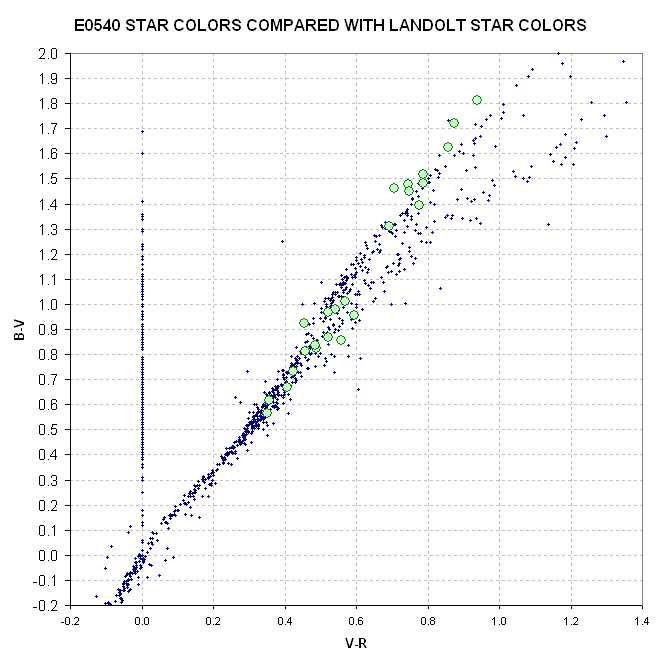
Figure 7. Final solution for E0540 star colors (B-V
versus V-R) compared with Landolt star colors, after applying empirical
adjustments.
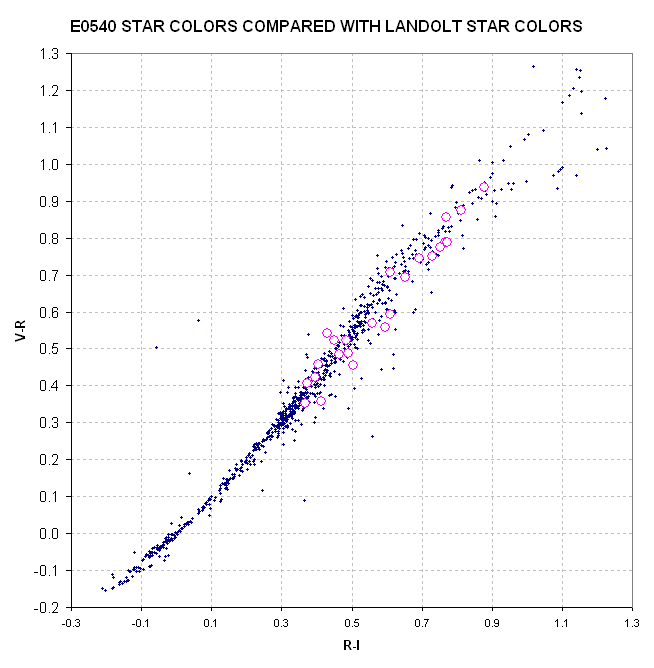
Figure 8. Final solution for E0540 star colors (V-R
versus R-I) compared with Landolt star colors, after applying empirical
adjustments.
After considering the size of the empirical shifts applied to B, V,
R and I mequation magnitudes, and also considering the RMS scatter in
the equation magnitude versus Landolt magnitude plots, I have adopted
the following SE uncertainties for the 47 E0540 stars:
Re-Analysis Deducing Source of
Mysterious Extinction Variation
After completing the analysis described above, I investigated the
mysterious anomalies that caused variations in apparent extinction. I
paid special attention to the possibilities of "hoarfrost" on the
following optical surfaces: 1) telescope front corrector plate, 2)
filters, 3) CCD cover plate and 4) CCD chip. Each hoarfrost hypothesis
could be rejected based on expected "behaviors" and I finally concluded
that the culprit was a thin cirrus haze that covered the sky and grew
slowly during the night. It will be useful to explain how I arrived at
this conclusion, as it illustrates the importance of a simple
precaution that I shall adopt for all future all-sky observations.
In the past I've been fooled by the slow accumulation of dew on the
telescope front corrector plate. It usually happens after a rainy day,
when the air is humid from ground water evaporation. Frost formation
follows the same setting; the only difference being ambient temperature
(frost point is essentially the same as dewpoint for surface
pressures). I monitor dew point and ambient air temperatrue, as well as
telescope tube temperature (to support my use of a focuser), and on the
night in question the two temperatures differed by ~16 F. This renders
it very unlikely that hoarfrost formed on the telescope front corrector
plate. Additional evidence for ruling out this hypothesis comes from
the fact that the anomalous extra extinction exhibited a dependence on
elevation angle (air mass), as described below.
On this night I set the CCD
cooler to -30 C, which is the coldest I have ever used. In the past I
have noted a "fog" come over images when I set the CCD TEC cooler to
cold and the last time I baked the CCD dessicant unit was last summer,
during the monsoon season. I recall feeling brave when I set the coolr
to -30 C. If either the CCD cover plate or the telescope corrector
plate had acquired a thin coating of hoarfrost it would have reduced
the amount of light reaching the CCD chip and this might have mimicked
a change in atmospheric extinction. If frost did accumulate on the CCD
chip, or cover plate, or filter, the decreased transparency of the
surface would be associated with an increased sky background level. The
following graph shows the sky background level measured for non-star
regions of 14 B-filter images.

This graph seems to support the idea of frost accumulation, until 06
UT, followed by a slower evaporation. The
shape of this trace is somewhat consistent with the outside air
temperature, which reached a minimum of 20 F at 06:20 UT and began to
rise at 08:00 UT. The telescope aperture can be
colder than the ambient air since it can radiate IR photons to cold
space more efficiently than the layer of air close to the ground (since
the thermal IR emissivity of the telescope tube is much closedr to one
than the layer of air). However, a sensor on the telescope tube (close
to the
rear, where the focuser motor is located) registered 21 F (-6 C) at
about 7:45 UT. To speculate that hoarfrost formed on the telescope
front corrector plate would require that my dew point sensor was
inaccurate by ~15 degrees. this is unlikely based on other times
(albeit warmer) when foggy surface conditions were associated with dew
points close to ambient temperature.
If frost accumulates on the CCD cover plate, or the chip itself, it
will start with condensation sites which grow with time. Never, in my
experience, has a too-cold chip produced a uniform pattern of
"fogginess." Invariably a mottled pattern appears, and grows noticeably
with time. There was no evidence of this, so I doubt that frost formed
on either the CCD chip or nearby cover plate. If, instead of frost
forming on the chip or cover plate, frost formed on a filter (which is
a few millimeters from the cover plate) the mottled pattern of
condensation sites would not be as noticeable. More time was spent
observing with a B-filter than the others, as I wanted to do a good job
of establishing B-band extinction for my site and this observing
session afforded a good opportunity with a couple hoursof free time
before the exoplanet fields could be observed. If the B-filter was more
frosted than the other filters, then I should see a different amount of
sky background enhancement for images taken with the other filters, and
their pattern of enhanced background versus time could be different. To
pursue this line of thought I measured sky background for the R-filter
images, thinking that it should be much less and more constant
considering the better RMS scatter of Equation R-magnitudes versus
Landolt R-magnitudes scatter diagram (Fig. 4, above).

Figure 10. Background sky levels for non-star regions
near the center of images taken with a B-filter (top panel) and
R-filter (bottom panel). Data taken close to each other in time are
assigned different colors, and a hand-fitted slope is shown that
corresponds to a linear dependence with air mass.
I was surprised to learn that the R-band images had larger sky level
enhancements than the B-band images. Furthermore, when the background
levels are grouped by time intervals, they exhibited a lienar
dependence upon air mass. This behavior is consistent with the presence
of cirrus clouds that covered the sky. The following graph is a plot of
the slopes of the lines in this graph versus time.

Figure 11. Slopes of "sky background level versus air
mass" plotted versus time. The R-band slopes (red squares) are aboput
3.6 times greater than the B-band slopes (blue diamonds).
I was unable to obtain satellite IR images for this date since they
are not archived for public doain access. The radiosone profile from
nearby Tucson at 12 UT showed a 6 C dew point to ambient difference
just below the tropopause (where cirrus clouds usually form), and the
Yuma sounding showed a trend toward that condition before its dew point
sensor failed. Radiosonde dew point measurements are notoriously
inaccurate at high altitudes, so we merely have semi-confirmation that
cirrus clouds were present in Southern Arizona during this night. At
sunrise the next day (14 UT) I didn't notice cirrus. Figure 7 implies
that extinction was NOT increasing monotonically during the night.
I take the position that I DO NOT KNOW what caused the unusual
behavior for both the extinction measurements and the sky background
level measurements. Although I favor the cirrus hypothesis, I really
don't need to know, since neither explanation will allow me to "rescue"
the observations from this night for credible all-sky photometry
results. I plan on another attempt at all-sky observing for creating a
photometric sequence for thses two exoplanet star fields.
Whether the enhanced sky background levels in the images were due to
cirrus or due to hoarfrost, the observations should be thought of as
"non-photometric." It is important to monitor photometric conditions
when attempting to conduct photometric observations. The principal
"take-home lesson" from thhis long and arduous analysis can be
summarized by the following:
MONITOR SKY
BACKGROUND LEVELS WHEN CONDUCTING ALL-SKY OBSERVATIONS
Link to Concepts for All-Sky
Photometry (describing the reasoning underlying the procedure for
deriving Equation Magnitudes)
____________________________________________________________________
This site opened: December 6, 2004. Last Update: December 23, 2004